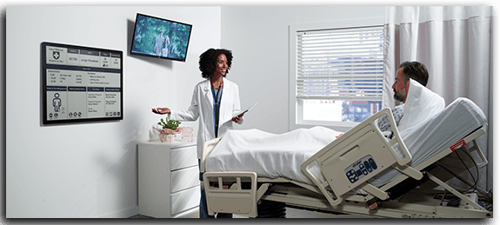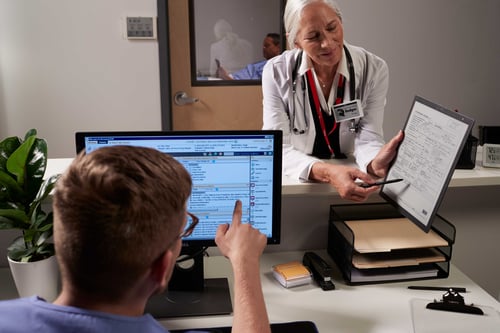While mass adoption of digital paper was driven by consumer applications like eReaders, continued innovation has seen ePaper pop up in healthcare and hospital settings as well.
Digital paper, also known as electronic paper or ePaper, can offer several benefits in healthcare and hospital settings. From streamlining workflows, like transcription processes, medical questionnaires, and consent forms, to displaying discharge information, treatment regimens, and medical updates that sync in real time with EHR (Electronic Health Records) systems, digital paper can improve patient care and increase operational efficiencies.
 Image: E Ink
Image: E Ink
Improved patient care: Digital paper technology can help to enhance patient care by providing healthcare providers with instant access to important patient information. For example, digital forms and charts can be used to document and track vital signs, medications, and other important patient information in real-time, allowing healthcare providers to quickly identify and respond to any changes in a patient's condition.
Increase operational efficiencies: Digital paper can be integrated into a variety of devices, such as tablets and smartphones, making it easier for healthcare professionals to access patient information and charts while on the go. For example, Digital Paper Tablets, commonly referred to as eNotes, enable providers and patients to access forms and charts can from any device with internet access. Furthermore, digital paper can help reduce the cost of printing and storing paper charts, simultaneously decreasing the cost of managing patient data.
Interoperability and real-time information sharing: Digital paper can be easily shared and updated in real-time, reducing the need for manual charting and reducing the risk of errors. This application also allows healthcare providers to easily access patient information from anywhere in the hospital. This increased mobility is especially useful for providers and professionals that frequently move between different departments or locations.
.

Image: E Ink
Ultimately, EHR systems can integrate with digital paper devices, which can help reduce the time spent on data entry and increase the accuracy of patient information. This can help to speed up the flow of information between healthcare providers and departments, leading to better coordination and patient care. Digital forms and charts can be easily filled out and stored electronically, reducing the need for manual data entry and minimizing errors. Digital paper improves efficiency and accuracy in data entry and record-keeping, which can increase the care a patient is provided.
The use of digital paper in healthcare and hospital environments can help to improve the overall efficiency, accuracy, and quality of care provided to patients. If healthcare providers or personnel are interested in integrating digital paper into their operations, E Ink has a loaner program. The number of devices for the program is customized and available for up to six months, depending on the deployment needs. You can learn more about the loaner program as well as E Ink’s applications in hospital and healthcare environments here.


Leave Comment